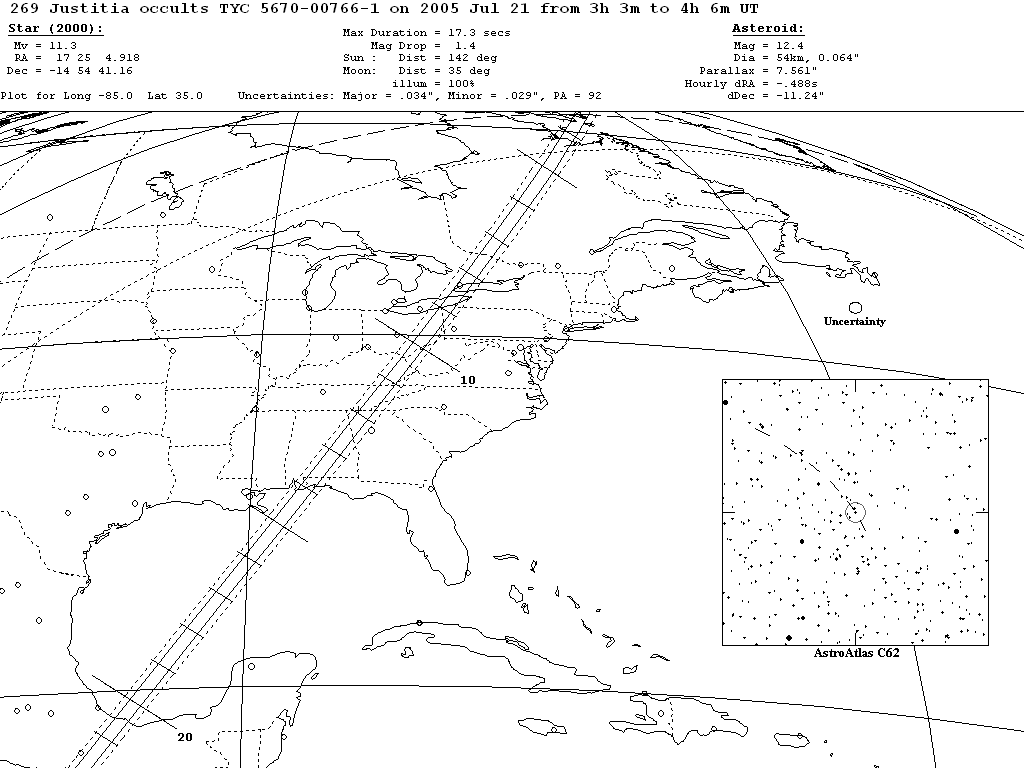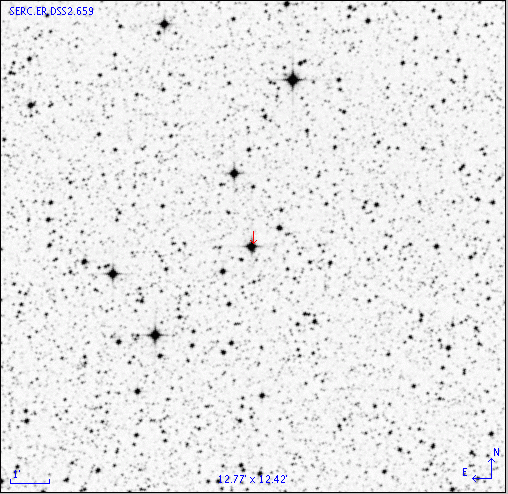
Map courtesy of Steve Preston -- see the Asteroid Occultation Update page for upcoming events.
On the night of July 20/21, 2005, the asteroid (269) Justitia was predicted to occult the star TYC 5670-00766-1 for observers in the northeast US and central Canada.

Map courtesy of Steve Preston -- see
the Asteroid Occultation Update page
for upcoming events.
The RIT Observatory near Rochester, New York,
fell about 130 kilometers east of the center of the predicted shadow track. That was about 2-sigma east of the predicted eastern edge of the shadow, so, if the predictions were correct, we would see nothing.
We set up to observe the event. RIT physics major George Privon came to help out -- thanks!
Our setup was:
I arrived about 90 minutes before the event to set things up. We placed a PC-164C video camera on the back of the 12-inch telescope and ran the signal through a Kiwi OSD video time insertion unit: it places GPS-derived timestamps on every frame of the video. The unit picked up a GPS lock just fine, and the VCR recorded the signal just fine.
The sky was bright, as the full moon had risen to about 15 degrees above the horizon at the time of the event. The moon was hidden behind a line of trees to the southeast of the Observatory, but it still made the southern sky glow. The target was about 31 degrees above the southern horizon at the predicted time, low enough that the images twinkled quite a bit.
On the screen of the video monitor, I could see faintly the target star and a nearby star to the north. The chart below shows a section of one of the SERC R-band plates, about 13 arcminutes on a side. The target is marked with an arrow, and the neighbor mentioned above is about 2 arcminutes to the north.

The Tycho-2 catalog gave the VT magnitudes of both these stars as 11.3. Every now and then, I could see on the video monitor the fainter star just north-west of the target; its entry in the USNO-B1.0 has magnitudes of about B=14.5 and R=12.9. It does not appear on the video tape recording.
We watched, and waited, and watched ... and the predicted time passed. Nothing happened. I reviewed the tape very carefully from UT 03:04:10 to 03:10:15, but again so no change in the brightnes of the target. If it had been covered by the asteroid, the combined light of the two would have dropped by 1.4 mag, which would have made it effectively invisible, and been very obvious.
I declare a "MISS" from our location. I have sent a report to Jan Manek: